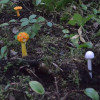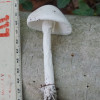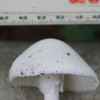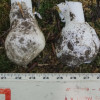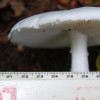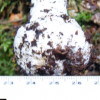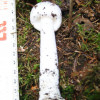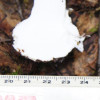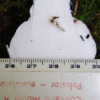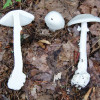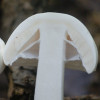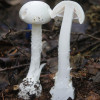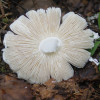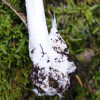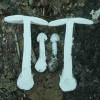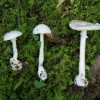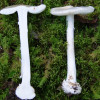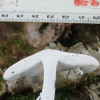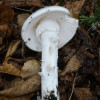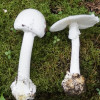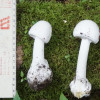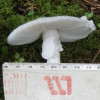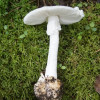Identifying Your Amanita
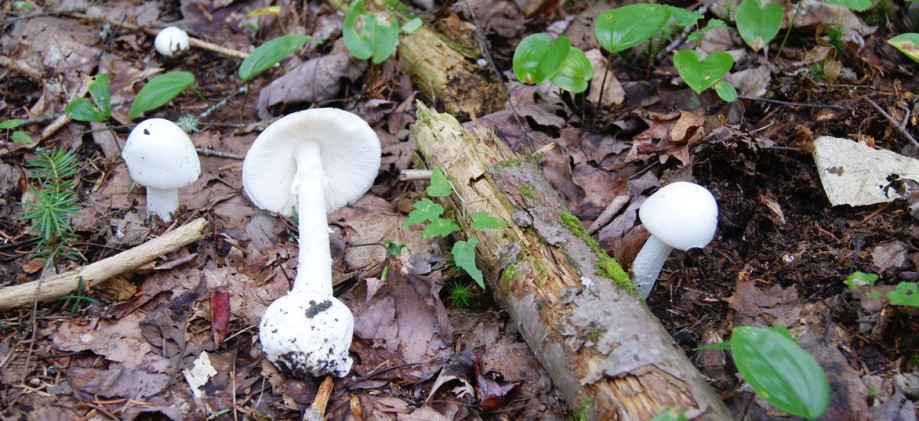
Habitat
The most abundant and widespread of the deadly amanita. The Destroying Angel fructifies far in the boreal forest, in all habitats and on lawns where trees are present.
Stalk
Fibrillous and bulbous, the bulb sometimes reaching 4 cm in diameter, onion-shaped or flattened and margined.
Stalk Feature
What is left of the secondary veil is referred to as the ring and is generally clearly visible around the stipe. Sometimes, however, there are only traces of it.
The volva surrounding the stem is generally always visible and an important criterion for identifying Amanita; sometimes, however, it will not be clearly visible, as there are only traces.
Chemical reactions
All parts of the fruitbodie turn yellow in the presence of KOH or NAOH. It is the most reliable way to distinguish it from Amanita magnivelaris. It is noted that FeSO4 gives a pale beige tint.
Comments
Send a comment
Intoxication by a Destroying Angel (and related species) is always serious because the symptoms appear six hours after consumption when the poison is well established in the body. Today, with proper treatment, people do not die, but they are still left with permanent damage.
When one comes across a completely white mushroom, an alarm signalling deadly danger should go on. Although several authors continue to state that there are no poisonous mushrooms in the boreal forest, the Destroying Angel persists well into the north, probably as far up as the tree line. During late summer excursions, almost all participants return with the Destroying Angel, Amanita virosa, in their baskets. During this period, some people do the rounds of their villages to remove it from their lawns in order to prevent poisoning in childrens.
For more informations















































